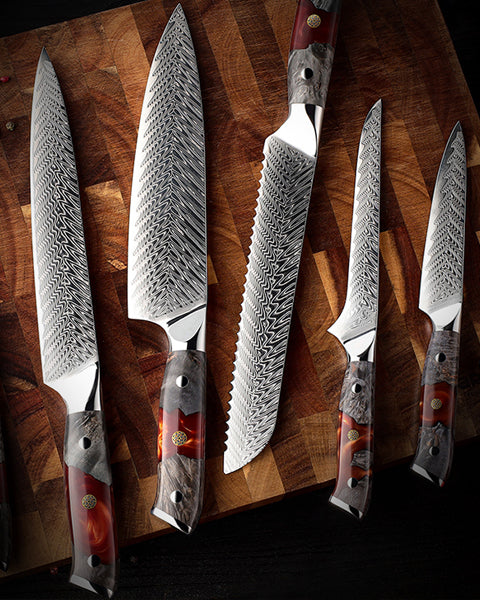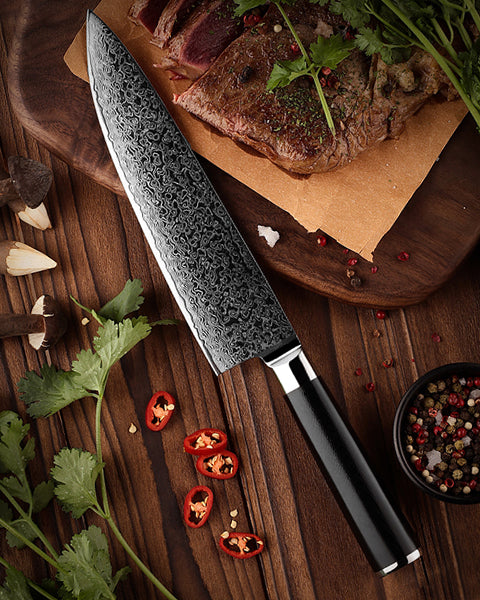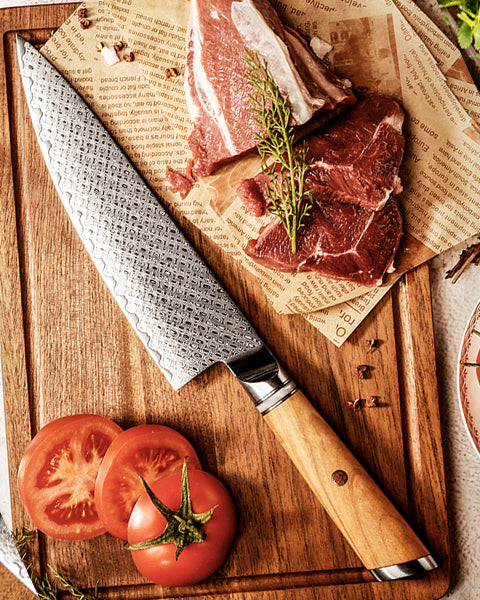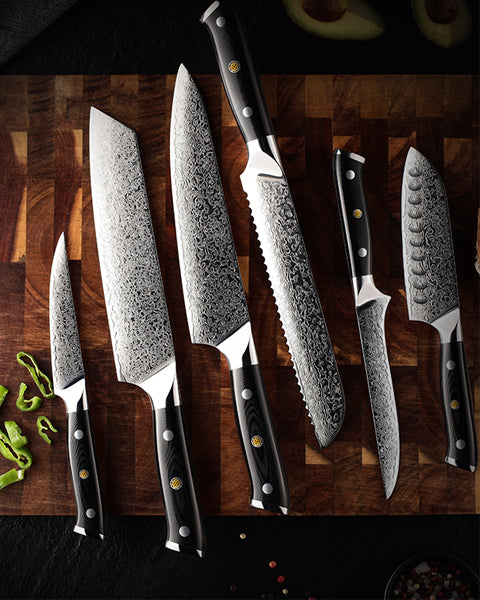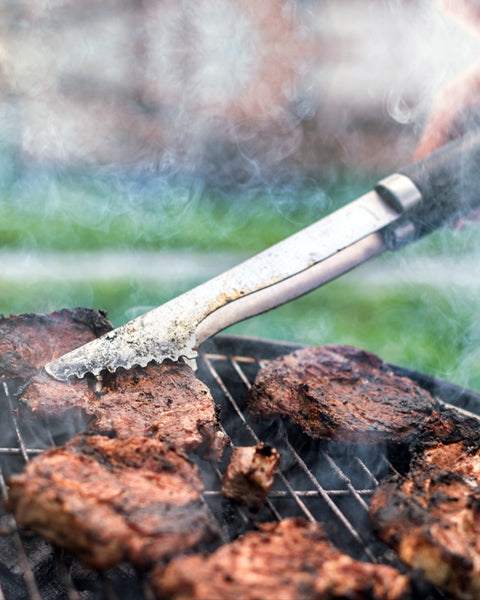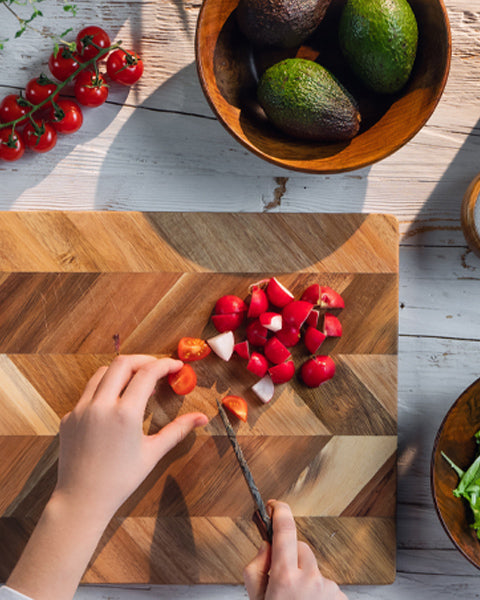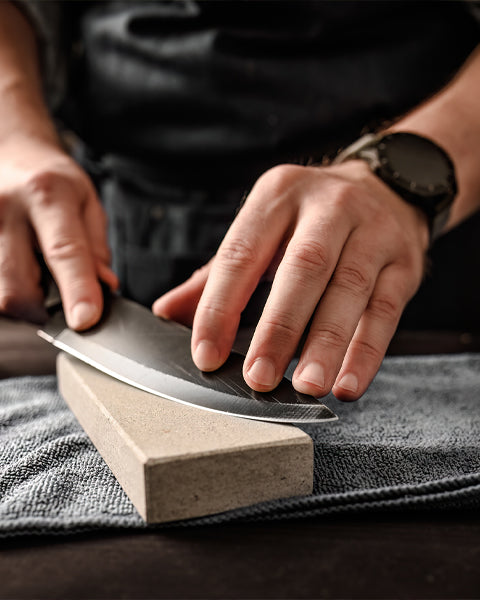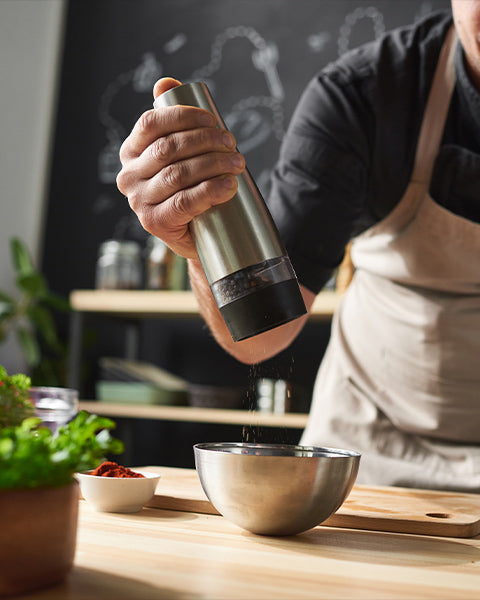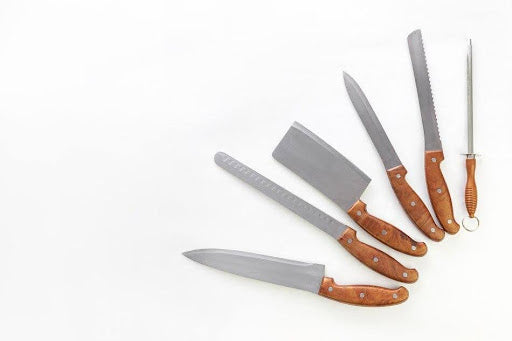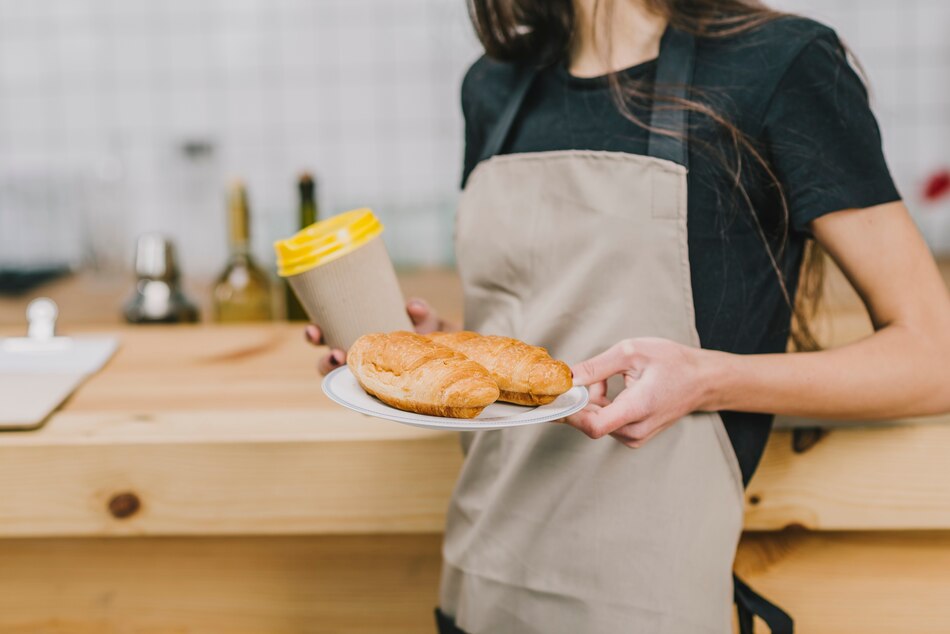Learning to use a knife well is integral to becoming a good cook. Properly holding and using a knife makes a big difference in your food whether chopping onions or julienning carrots. This beginner guide will teach you simple knife skills such as keeping your knife safe and sharp. Learn more about how CHOPLIX knives can help you improve your cooking and enjoy your time there.
Knife Safety
In every kitchen knife safety is paramount. Hold a knife firmly and keep your fingers away from the blade. When giving someone a knife, hold the handle and turn the blade so the handle faces the other person. Knife safety is paramount if you want to avoid accidents in the kitchen. Always use a sharp knife. That is the first rule of cutting safety. A dull knife needs more force to cut which makes it more likely that you will slip and cut yourself. A sharp knife also cuts more accurately which makes mistakes less likely.
Another important part of knife safety is holding and placing your hands. Wrap your fingers around the knife handle to ensure a firm grip. Do not hold the knife by the blade or with your fingers over the blade. To keep your balance, put your hand on the handle and rest your thumb on the side of the blade.
Remember always to keep your fingers away from the knife edge. To put your hand in the right place, curl your fingers under your hand and use your knuckles to guide the knife. This method keeps your fingers from getting cut by chance while still letting you handle the knife.
Putting the cutting board in the right place is also essential for knife safety. Always use a steady flat surface. If you're cutting on a surface that isn't level or slippery the cutting board could move, hurting you. Also ensure the cutting board is dry and clean so you don't slip.
Always keep your knives in a safe place when not in use. A knife block or magnetic strip is the best way to store knives because it keeps them close at hand and keeps the blades safe. Loosely keeping knives in drawers can dull the blades and make it more likely that you will hurt yourself when you grab them.
Types Of Knives
Chef Knife
The chef knife might be the most essential cooking tool. Because of its flexibility it can cut many different things from veggies to meat. The blade is usually between 6 and 14 inches long and its bent edge makes it simple to rock back and forth while cutting. This rocking motion and the blade sharpness make it possible to cut quickly and precisely.
Paring Knife
It is a small knife with a blade usually between 2 and 4 inches long. Because it is small and has a pointy end it is excellent for precise jobs like peeling fruits and veggies, taking out seeds and deveining shrimp. The blade is generally smaller than a chef knife which lets you make cuts with more detail.
Serrated Knife
The serrated knife sometimes called a bread knife has a jagged edge. It can cut through bread without crushing it because of this edge. It is excellent for cutting baguette cakes and bread. You can also use the serrations to slice tomatoes and peppers which have tough skins but are soft inside.
Utility Knife
The utility knife is like a chef knife but smaller. Its blade is usually between 4 and 7 inches long. This helpful tool can be used for many cutting jobs like slicing cheese, making sandwiches and clipping veggies. Because it is smaller it is easier to use for jobs that need more accuracy than a chef knife can provide.
Boning Knife
This boning knife has a thin bendable blade for cutting meat, chicken and fish bones out. The blade is bendable so it can get around joints and other tight spots making it easier to separate meat from bone. Because it cuts through the meat cleanly the blade sharpness also helps to cut down on waste.
Santoku Knife
Japan's Santoku knife has become more prevalent in Western kitchens over the past few years. It is great for slicing, chopping and mincing because the blade is wide and the edge is flat. Home cooks love the Santoku knife because it is lighter and easier to move around than a regular chef knife.
Cleaver
A cleaver is a big heavy knife with a thick blade that cuts through bones and tough meat cuts. It is often used to quickly chop meat fowl and veggies in Chinese and other Asian cooking styles. When you chop the knife, weight gives you motion making it easier to cut through rigid materials.
Filleting Knife
Filleting is done with a long bendy knife called a fileting knife. The fileting knife has a thin sharp blade that lets you make exact cuts along the bones of the fish. This makes sure that the filets are clean and free of bones. The bendable blade can go around the fish curves and outlines. This makes it easier to cut the pieces out of the fish in one piece.
Slicing Knife
The slicing knife is a long thin knife that cuts cooked foods like roasts and hams into thin even pieces. It is also called a cutting knife. The slicing knife's long thin blade allows it to create smooth unbroken cuts of the same thickness.
Steak Knife
The steak knife is used at the table to cut cooked meat, especially steak. It is a small sharp knife with a cut edge. The steak knife has a sharpened edge that makes cutting through meat without tearing it easy. This makes sure that every bite is juicy and full of flavor.
Knife Maintenance
Proper maintenance is essential to keeping your knives sharp and safe to use. Sharpening your knives regularly is the best way to keep them sharp and functional. You can sharpen knives in several ways such as with an electric sharpener, a grinding stick or a sharpening stone. No matter your chosen method, carefully follow the maker's advice to keep your knives in good shape.
It is essential to hone your knives often in addition to cleaning them. When you sharpen your knife the edge is realigned which makes it stay sharp longer. To sharpen your knife just run the blade along a sharpening rod at an angle of 20 degrees moving from side to side each time. Do this several times to get the edge back in place.
It is also essential to store your knives properly. Putting them away in a knife block or on a magnetic strip will keep the blade safe and prevent accidents. Loosely keeping knives in drawers can dull the blades and make it more likely that you will hurt yourself when you grab them.
If you care for your knives properly they will stay sharp and functional for many years. Reasonable care will also ensure they are always ready to use when needed.
Basic Knife Cuts
It would help if you learned how to make simple knife cuts to get good at cooking. The dice julienne and chiffonade are some popular cuts that every home cook should know how to do. The dice cut is often used for veggies like onions, carrots and potatoes because it makes small even food cubes. First cut the vegetables into slices. Then stack the slices and cut them into strips. Lastly, turn the strips over and cut them into cubes.
The julienne cut makes long thin pieces of food. Carrots, zucchini and other veggies are often cut this way. First cut the vegetables into thin slices. Then stack the slices and cut them into long strips. Herbs like basil and mint are sliced using the chiffonade method. Stack the leaves, roll them into a tight ball and cut them into thin strips to chiffonade.
Getting better at these simple cuts will make you feel more comfortable and confident in your knife skills. If you try it enough times you can chop, slice and dice like a pro.
CHOPLIX Knives
CHOPLIX knives will improve your cutting experience. Their curved handles make them easy to hold, keeping your hands from getting tired after use. The sharp blades make cutting easy and ensure precision. The knives are also made from suitable materials which means they will last a long time.
A critical aspect of CHOPLIX knives is that they are very sharp. The knives are carefully made to stay sharp even after being used many times. This allows for clean exact cuts speeding up and improving the food preparation.
One more thing about CHOPLIX knives is that they last a long time. They are made from strong long lasting materials meant to handle the rough use they get every day. Because they are so strong your knives will last for many years which makes them a good buy for any kitchen.
Not only are CHOPLIX knives very sharp and long lasting but they are also made with safety in mind. The curved handles make them easy to hold, lowering the risk of accidents. Blade guards keep the blades safe when not in use making the knives even safer.
If you want to improve your knife skills CHOPLIX knives are a great choice. They are helpful in any kitchen because they are sharp, last long and have safety features.
Conclusion
Anyone who wants to be a cook must learn how to use knives well. You can learn different cutting methods with experience and the right tools. To improve your cooking experience buy good knives like CHOPLIX. You can improve over time if you practice often and use the proper method. With these tips you can feel better about your cooking skills and get better at it quickly.

